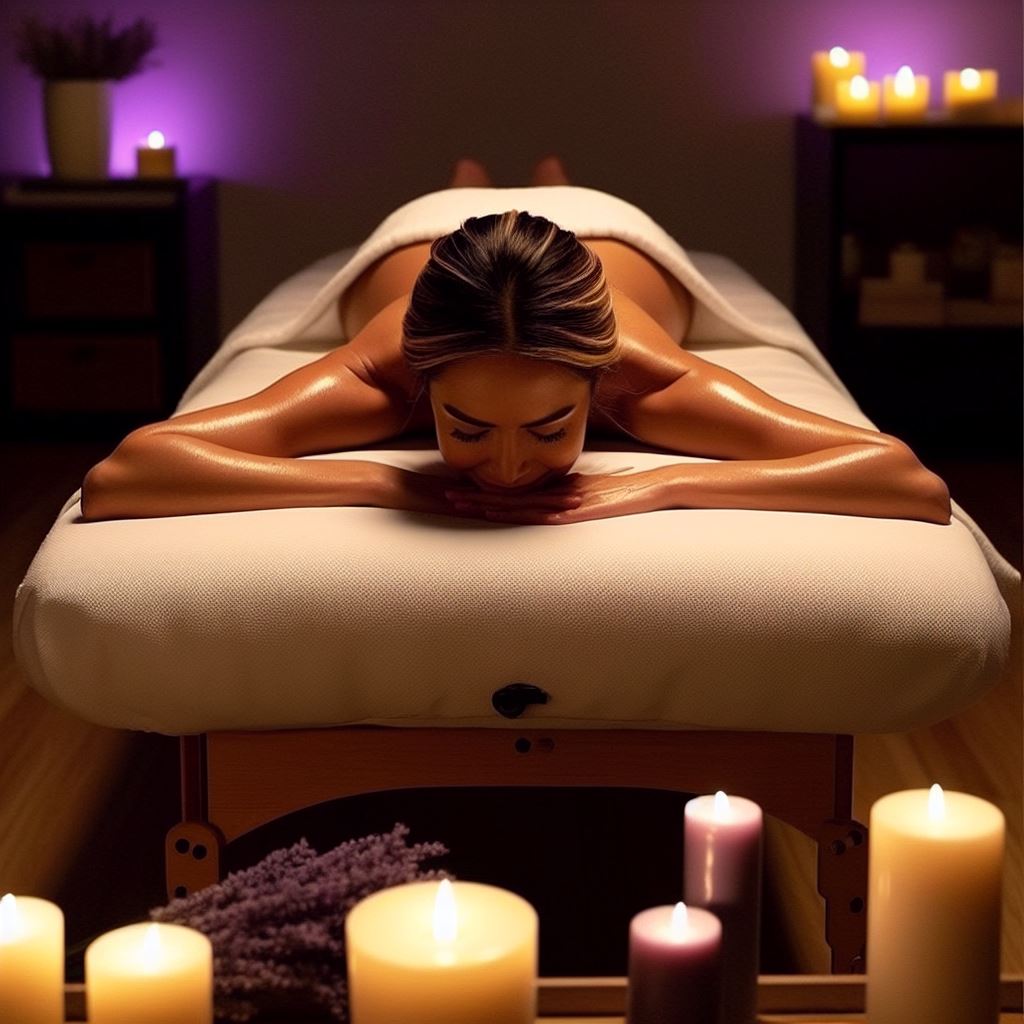Have you ever wondered what it feels like to get a massage? Maybe you have heard about the benefits of massage therapy, such as relaxation, stress relief, and pain management. But you are not sure how to prepare, what to expect, and how to make the most of your first massage experience.
Don’t worry, we are here to help. In this blog post, we will provide you with an in-depth guide for first-time massage clients. You will learn how to get ready for a massage session, what happens during a massage session, and how to enhance the effects and enjoyment of a massage session. By the end of this post, you will be ready to book your first massage appointment and enjoy the experience.
How to Prepare for Your First Massage
Getting a massage can be a wonderful way to relax your muscles, release stress, and feel good. But before you head to your first massage appointment, there are some things you should do to prepare yourself and make the most of your massage experience. Here are some tips on how to prepare for your first massage:
- Hydrate well before the massage. Drinking plenty of water before your massage will help enhance the effects and aid in toxin removal. Massage can dehydrate your body by increasing your blood and lymph circulation, so you want to make sure you are well hydrated before and after your massage.
- Shower before the massage. Taking a shower before your massage will not only make you feel fresh and clean, but also ease the tension in your muscles and prepare your skin for the massage oil. Showering will also help you relax your mind and let go of any stress or anxiety before the massage.
- Communicate with the massage therapist. Before your massage, you should talk to your massage therapist about any specific concerns, areas of tension, or injuries that you have. This will help them tailor the massage to your needs and preferences, and avoid any techniques that may be contraindicated or uncomfortable for you. You should also let them know about any allergies you have to oils, lotions, or aromatherapy.
- Dress comfortably and wear loose clothing. When you prepare for a massage, you should wear or bring loose and comfortable clothing with you. You will be asked to undress to your comfort level for the massage, and wearing loose clothing will make it easier for you to do so. You will also appreciate not having to put on tight or restrictive clothing after the massage, when you may feel sore or tender.
- Arrive early. You don’t want to rush to your massage appointment and arrive stressed or late. Give yourself enough time to get to the massage location, fill out any necessary forms, use the restroom, and transition into a relaxed state. Arriving early will also give you a chance to meet your massage therapist, ask any questions, and discuss your goals and expectations for the massage.
- Relax your mind. One of the most important things to do before your massage is to relax your mind and let go of any worries, fears, or negative thoughts. Massage can help you achieve a state of deep relaxation, but you need to be open and receptive to it. Try to clear your mind of any distractions, focus on your breathing, and enjoy the present moment. You can also listen to some soothing music, read a book, meditate, or do whatever helps you relax before your massage.
What to Expect During Your First Massage
After you have prepared yourself for your first massage, you may be wondering what will happen during your massage session. A typical massage session consists of four main stages: the consultation, the assessment, the treatment, and the feedback. Here is what you can expect during each stage:
- The consultation. Before the massage, the therapist will likely ask you a series of questions about your medical history, any current health conditions, and your goals for the massage. This is to help them understand your needs and preferences, and to ensure that the massage is safe and effective for you. You should be honest and open with your therapist, and let them know if you have any questions or concerns.
- The assessment. After the consultation, the therapist may perform some special tests or orthopedic tests to evaluate your condition and create a treatment plan. These tests may involve checking your range of motion, posture, muscle strength, and pain levels. The therapist will explain the purpose and procedure of each test, and ask for your consent before performing them.
- The treatment. Once the assessment is done, the therapist will take you to the massage room and ask you to undress to your comfort level and lie down on the massage table under a sheet. The therapist will then use various techniques, such as kneading, gliding, and tapping, to manipulate the muscles and soft tissue of your body. The therapist will only uncover the area that they are working on, and will respect your privacy and comfort at all times. The therapist will also check in with you about the pressure, comfort, and any feedback during the massage. You should communicate with your therapist if you feel any pain, discomfort, or need to adjust anything.
- The feedback. After the massage, the therapist will leave the room and give you some time to rest and get dressed. The therapist will then meet you outside the room and ask you how you feel and if you have any questions or comments. The therapist will also give you some recommendations on self-care, such as stretching, exercises, or home remedies. You should follow the therapist’s advice to maintain the results and improve your health and well-being.
How to Make the Most of Your Massage Experience
Getting a massage is not only a treat for yourself, but also an investment in your health and well-being. To make the most of your massage experience, you should follow some simple tips that will help you extend and amplify the effects of the massage. Here are some suggestions on how to make the most of your massage experience:
- Hydrate after the massage. Drinking plenty of water after the massage will help flush out any toxins that may have been released from your muscles and tissues during the massage. Water will also prevent dehydration and replenish the fluids that may have been lost during the massage. Hydrating after the massage will also help you avoid any headaches, fatigue, or soreness that may occur after the massage.
- Avoid any strenuous activity or alcohol after the massage. After the massage, your body needs some time to recover and heal from the massage. You should avoid any activities that may put stress or strain on your muscles, such as heavy lifting, running, or exercising. You should also avoid drinking alcohol, as it can dehydrate you and interfere with the healing process. Instead, you should rest and relax after the massage, and enjoy the feeling of calmness and well-being that the massage has given you.
- Apply some ice or heat to any sore or tender areas after the massage. Sometimes, you may feel some soreness or tenderness in the areas that were massaged, especially if the massage was deep or intense. This is normal and usually goes away within a day or two. To ease the discomfort, you can apply some ice or heat to the affected areas, depending on your preference. Ice can help reduce inflammation and pain, while heat can help increase blood flow and relaxation. You can use a cold pack, a hot water bottle, or a heating pad for this purpose.
- Follow the massage therapist’s recommendations on self-care. After the massage, the massage therapist may give you some advice on how to take care of yourself and maintain the results of the massage. This may include some stretching exercises, some home remedies, or some lifestyle changes that can help you improve your health and well-being. You should follow the massage therapist’s recommendations, as they are based on their professional knowledge and experience, and can help you prevent or manage any issues that may arise after the massage.
- Book regular massage sessions. One of the best ways to make the most of your massage experience is to book regular massage sessions. Regular massage can help you relax your muscles, release stress, and feel good. It can also help you improve your circulation, increase your flexibility, reduce your anxiety, improve your sleep, and enhance your well-being. Regular massage can also help you manage pain and treat specific conditions, such as headaches, back pain, arthritis, or sports injuries . Depending on your needs and goals, you can choose from different types of massage, such as Swedish, deep tissue, sports, or prenatal massage . You can also find a massage therapist that suits your preferences and budget.
Conclusion
You have just learned everything you need to know about getting your first massage therapy. You have discovered what massage therapy is and how it can help you relax, relieve stress, and manage pain. You have also learned how to prepare for your first massage, what to expect during your first massage, and how to make the most of your massage experience.
Massage therapy is a great way to improve your health and well-being. It can help you improve your circulation, flexibility, and well-being. It can also help you treat specific conditions and issues, such as headaches, back pain, arthritis, or sports injuries. Depending on your needs and goals, you can choose from different types of massage, such as Swedish, deep tissue, sports, or prenatal massage. You can also find a massage therapist that suits your preferences and budget.
Now that you have all the information you need, why not book your first massage appointment and enjoy the experience? You deserve to pamper yourself and invest in your health. You will be amazed by the benefits and enjoyment of massage therapy.
We hope you found this blog post helpful and informative. If you have any feedback, questions, or comments, please feel free to share them with us. We would love to hear from you. Thank you for reading and happy massaging!





















